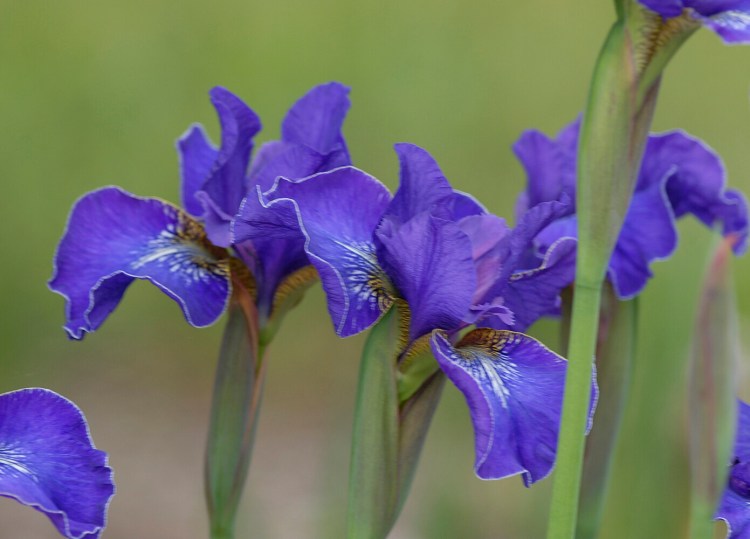Plants grow; it’s what they do.
Perennials start early in spring at ground level, sending up shoots, followed by leaves, flowers and seeds. They’re beautiful and a benefit to the environment. It’s all as Mother Nature intended.
Plants also grow sideways – both above and below ground. That perennial you purchased in a 3-inch pot five years ago is now 3 feet in diameter and encroaching on its flower bed neighbors. Most gardeners want a full garden, with scant bare soil or mulch visible, so that’s not necessarily bad.
But the spreading can cause problems. For starters, some plants spread more quickly than others. If such plants begin to over take neighboring less aggressive – and perhaps more desirable – plants, then intervention from the gardener is required.
From now until late October is a good time to divide most perennials. You have been looking at the garden all summer, so you know which plants are getting so large they are not thriving, either producing smaller leaves or fewer flowers, and which plants are running out of room to expand or are dominating their bed.
Many of these perennials could also be divided in the spring. But the familiarity of the season and the fact that the plants will be dying back to the ground as winter approaches makes now the best time for me, in part because it means I’ll spend less time looking at slightly messy just-divided plants.

If your daylilies require dividing, fall is a good time for the task. Gregory Rec/Staff Photographer
Many of the plants you will be dividing have roots that grow in clumps. These include hostas and daylilies, which my wife, Nancy, and I worked on last fall. The hostas were getting too large and had been damaged by a few of our grandson’s errant basketball shots. We’ve since moved on to Stella d’Oro daylilies, which were taking over a bed and hiding more desirable plants. Shockingly, we had an open space in our yard that needed plants, so the divisions served a double purpose.
With these and similar plants, I find it best to dig up the entire plant. You can, with especially large clumps, use a shovel to cut the plant while it is still in the ground, but that seems a little barbaric. I usually put the freshly dug clumps on a plastic tarp after I dig them, to keep things neat.
For some plants, the roots are easily separated by hand. Others separate best if pierced with two gardening forks or trowels and pried apart. If the plants are especially tough, the division may require a knife. For many years, Nancy and I used a serrated bread knife that had gotten too battered for kitchen work. When the handle fell off, we graduated to a hori-hori gardening knife. On a few plants, like Joe Pye weed, the clumps are so tough that dividing requires a hatchet. Don’t worry, the roots survive the treatment.
Replanting is easy. Put about a third of the clump back where the original plant was (assuming you want it there). Hold the clump’s foliage and stems in one hand in the hole while back-filling with your other hand. This keeps the leaves above ground and the roots below ground at the same level where you started. Make sure the soil at the new site has been loosened thoroughly.
Dividing plants with rhizomes root systems require more tenderness. Among the plants that spread by rhizome are some gingers, lily of the valley and irises. Of these, irises require division most often. If your iris clumps look like the rhizomes are dying in the middle, it’s time to act.
Again, dig out the entire plant, separating the rhizomes. Save and plant only the ones with a healthy (not soft or hole-riddled) root piece and a fan of three or more leaves. Put about five of those pieces back where the original plant was, and plant the rest wherever you have a sunny location. As with clumps, plant them at the same depth the rhizome was originally. Trim off any torn or damaged foliage.
The hard work is done, but you’re not finished. As with all newly installed plants, regular watering is required, right up until the ground freezes.
Tom Atwell is a freelance writer gardening in Cape Elizabeth. He can be contacted at: tomatwell@me.com
Send questions/comments to the editors.



Comments are no longer available on this story